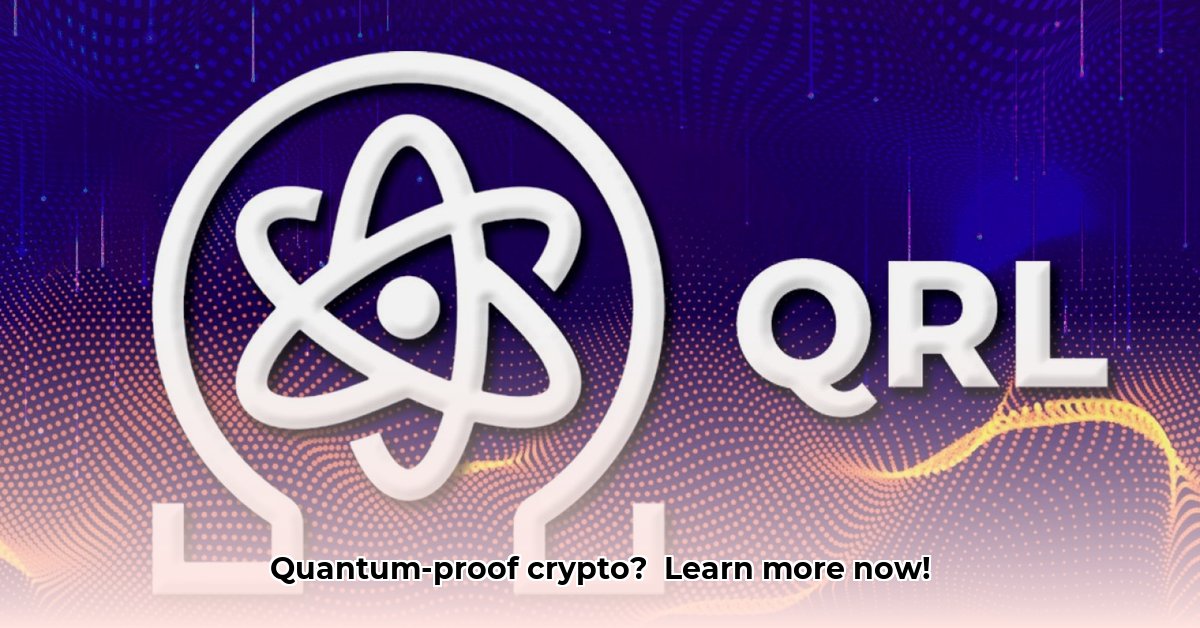
Quantum Resistant Ledger: Future-Proofing Your Digital Assets
The rise of quantum computing presents a significant threat to current blockchain security. These powerful machines could potentially crack the encryption methods underpinning much of our digital infrastructure, jeopardizing everything from financial transactions to sensitive personal data. Quantum Resistant Ledgers (QRLs) offer a proactive solution, designed to withstand the computational power of quantum computers. This article delves into the technology behind QRLs, exploring their advantages, limitations, and the path towards wider adoption. Understanding QRL is crucial for anyone concerned about the long-term security of their digital assets.
The Quantum Computer Threat: It's Not Sci-Fi
Quantum computers leverage the principles of quantum mechanics to perform calculations far beyond the capabilities of classical computers. Algorithms like Shor's algorithm could render current encryption standards obsolete, potentially rendering current blockchains vulnerable. This isn't a hypothetical concern; the development of quantum computers is progressing rapidly, making the need for quantum-resistant alternatives increasingly urgent. How can we safeguard our digital future from this emerging threat? The answer lies in innovations like Quantum Resistant Ledgers.
How QRL Works: A Simpler Explanation
Many QRL systems utilize advanced cryptographic techniques, often centered around XMSS (Extensible Message Signature Scheme). XMSS is a type of digital signature scheme designed to resist attacks from quantum computers by relying on different mathematical problems than current methods. Think of it as a newly designed lock, impervious to traditional methods of picking. This core design principle provides the foundation for QRL's enhanced security against Quantum attacks. This fundamental difference is key to understanding QRL's strength.
Why Choose a Quantum-Resistant Solution Like QRL? The Advantages
Enhanced Security: QRLs provide a significant improvement in security against quantum computers, offering a long-term solution to a growing threat. It's about future-proofing your digital life, not merely patching existing vulnerabilities.
Ongoing Development: Active development communities continually work on improving QRLs, ensuring the security and functionality of the technology adapt to evolving challenges. This constant development distinguishes it from static security systems.
Improved User Experience: Many QRL platforms incorporate user-friendly features such as reusable addresses and hardware wallet compatibility, enhancing both usability and security. They blend cutting-edge security features with streamlined interaction for a seamless user experience.
QRL’s Limitations: The Challenges Ahead
While incredibly promising, QRLs have limitations that need consideration:
Scalability: Some QRL systems might face scalability challenges, meaning that they may struggle to handle a high volume of transactions efficiently. Current performance tests are revealing ways to resolve this challenge.
Algorithm Dependence: Current QRL implementations often rely heavily on a single algorithm, such as XMSS. Diversification of underlying cryptographic algorithms is essential for robust security against future attacks. This focus on one algorithm may prove to be a limitation over time.
Adoption Rate: Wider adoption across various sectors is crucial for QRLs to achieve their full potential and secure its place in the future of blockchain technology. Widespread adoption builds a stronger, more secure ecosystem overall.
Risk Assessment: A Balanced View
A comprehensive risk assessment considers various factors:
| Factor | Risk Level (Current) | Mitigation Strategy |
|---|---|---|
| Core Algorithm (e.g., XMSS) | Medium | Ongoing security audits, exploring additional algorithms |
| Transaction Speed & Scalability | Medium | Continued performance testing and optimization |
| Regulatory Landscape | Low | Monitoring and adapting to evolving cryptocurrency regulations |
| Market Adoption | Medium | Community building, real-world applications development |
How to Mitigate Scalability Challenges in Quantum-Resistant Ledgers
"The scalability of quantum-resistant ledgers is a critical area of ongoing research," says Dr. Anya Sharma, Cryptography Expert at MIT. Addressing scalability is paramount for the successful adoption of QRLs. Several strategies are being explored:
- Sharding: Partitioning the blockchain improves transaction processing speed.
- Layer-2 Scaling: Off-chain processing reduces load on the main chain.
- Algorithm Optimization: Improving efficiency of existing quantum-resistant algorithms directly enhances scalability.
- Specialized Hardware: Custom hardware designed for quantum-resistant algorithms optimizes performance.
- Hybrid Approaches: Combining existing and newly designed algorithms provides a gradual transition path.
Choosing the right algorithm is also crucial, balancing security and performance. Different algorithm types (lattice-based, hash-based, code-based, multivariate) offer varying trade-offs. The selection must carefully balance security and efficiency for optimal scalability.
What Does the Future Hold for QRLs?
QRLs represent a crucial step towards a future-proof blockchain ecosystem. While challenges remain, the potential of QRLs to safeguard our digital assets from quantum computer threats is considerable. The transition to quantum-resistant technologies is not a question of if, but when. QRLs put us on the proactive path for a secure digital future. Active community engagement and ongoing improvements are vital to realize its full potential, ultimately securing the digital future for everyone.